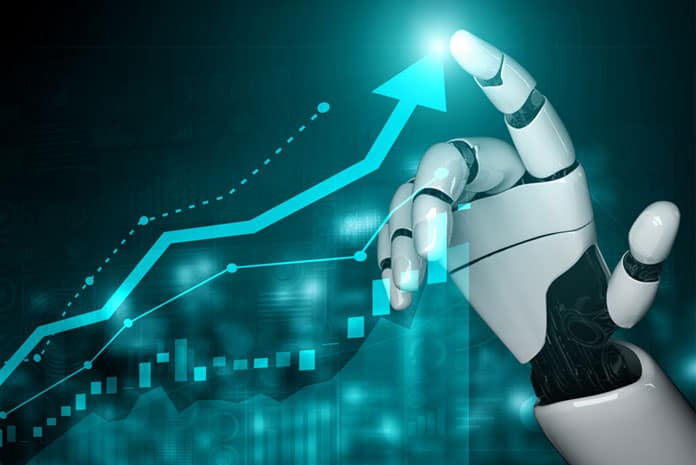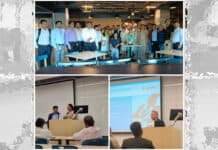By Anuj Vaid, EVP, CMS IT Services
Even before 2020 propelled businesses across the globe to accelerate their digital transformation, early adopters had started to capture real value. Organisations that embraced remote working experienced an increase in employee productivity even as the overall cost of operations reduced. The new work models also allowed them to access untapped talent pools and reduce staffing costs by hiring in Tier 2 and Tier 3 cities.
In 2021, the world will continue to lean heavily on technology. Multiple studies reveal that a majority of employees prefer remote working not just in 2021, but even in 2022 and possibly permanently at least some days a week. This means that for the foreseeable future, “the office” will be remarkably different and we could be looking at a hybrid model of working, with people fluidly moving between working on site and from wherever needed.
Remote working naturally comes with its own set of challenges, like loss of social interaction, collaboration and team building. To counter this, companies will continue to look for innovative ways of engaging and reaching out to employees, customers, partners, and the ecosystem.
Each industry’s focus and pace of transformation is distinct:
• Fintech leads the way, transcending from customer delight to customer intimacy. Hyper-personalization strategies, data scientists accurately predicting consumer behaviour, AI/ML bots fighting cyber fraud and leveraging blockchain to simplify BAU transactions are some of the innovations that will transform the way banking and financial services operate, connect, and interact with customers.
• Convergence is the name of the game for Manufacturing. Industry 4.0 will be predominantly driven by IoT-OT-IT convergence working with all pervasive sensor usage and advanced robotic technologies. VR-AR-MR and 3D printing convergence as well as IA (Intelligent Automation)- AI (Artificial Intelligence) convergence via RPA and analytics will be prevalent.
• The Healthcare vertical will witness multiple advancements relying on real time digital interactions using 5G e.g. on-demand virtual consultations, the Internet of Medical Things, (wearables and apps that measure stats and provide deep data insights), physical therapy using AR/VR, etc.
• Immersive Learning via virtual digital universities will radically change how we consume knowledge and forever transform the Education sector.
• FMCG will be disrupted by Cloud Connected Supply Chains and rural market warfare via retail intelligence platforms.
• Retail is betting on social commerce (real-life shopping experience on social platforms) and AR-powered immersive shopping experiences to sustain the surge in online shopping. By 2025, 40% of physical experience-based businesses will improve financial results and outperform competitors by extending into paid virtual experiences (source:Gartner)
Let’s unpack some of the key foundational technologies that will trigger disruptive innovation in 2021.
Zero trust architecture
India is the 3rd most cyber-attacked country in the world. Distributed workloads, remote working and an explosion in connected devices make networks, services, apps and data more vulnerable than ever before. Fortification of endpoints and a zero trust posture is imperative to secure our systems and data.
Zero trust architecture models ensure integrated endpoint clients that can handle multi-factor authentication, identity provisioning, and endpoint detection and response into a single access management tool. And until that happens there would be increased use of automation in management and governance of endpoint security. Predictive compliance is the new norm that helps security leaders determine and prevent non-conformities.
Cloud maturity & hyperautomation
Intelligent workload management is the way forward and hybrid cloud infrastructure makes it possible. Organizations create operational stability through custom cloud configurations, spanning from SaaS applications to legacy on-prem deployments. By 2023, 40% of all enterprise workloads will be deployed in cloud infrastructure and platform services, up from 20% in 2020 (source:Gartner)
Hyperautomation utilizes advanced technologies like AI/ML and RPA to automate, simplify, and manage computes across the enterprise. It allows companies to reduce/replace the manual process of resource allocation, system tuning and configurations, data management and mining, service management and systems provisioning.
Garner maintains that by 2024, organizations will lower operational costs by 30% by combining hyperautomation technologies with redesigned operational processes.
Conversational AI
Just like cloud brought scale and speed within reach of small companies with small budgets, chatbots empower small teams with small budgets to deliver the 24/7 customer-first experience typically associated with large enterprises and dedicated call centers.
Enterprises, on their part, adopt conversational chatbots that serve as a uniform platform for internal and external customers, and support integrations with enterprise tools, collaboration suites and social media platforms. This delivers a seamless experience across the ecosystem.
IoT everywhere
By 2022, there will be 29 million connected devices on the internet, with 50% of these being IoT devices (source: Telecommunications Industry Association). IoT and smart devices have already begun to infiltrate every activity whether it is safety initiatives (such as building cleaning technologies and track-and trace capabilities) or healthcare, banking, supply chain, and customer experience. Smart home, wearables, smart city, smart grid and industrial internet are the most popular applications of IoT devices.
Intelligence at the edge
Gartner predicts that by 2025, 75% of business-generated data will be generated and processed at the edge. AI at the edge allows mission-critical and time-sensitive decisions to be made faster, more reliably and with greater security. The race to the edge is being fueled by the rapid growth of smart devices — phones, wearables, and sensors, to name a few.
Data
IBM asserts that worldwide, people are already generating 2.5 quintillion bytes of data each day. By 2024, we will have generated 149 zettabytes of data globally (source:Statista). Everything about data is changing gear with vast strides being taken in enabling technologies including blockchain. The velocity and quality of information enables businesses to think less sequentially and more disruptively.
5G connectivity
5G ushers in an era of unprecedented connectivity – superfast, ultra-reliable, low latency networks that seamlessly support up to 1 million devices per square kilometre and still stream live video without buffering. This 1000x increase in compute capacity (compared to 4G) becomes the foundation on which other new technologies like IoT, big data, AR/VR, etc deliver immersive, novel experiences.
Conclusion
2021 will see the acceleration of a fresh approach to business built on the foundation of emerging and new technology. While 2020 may have been the proof of concept, 2021 and beyond will be an exciting implementation journey.














